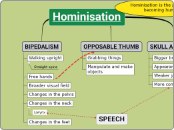She is in charge of the study and behaviors of the organs of phonation.
consonant sound and their place of articulation
wefrtjk
VOCAL STRINGS: Organ made up of two true and two false strings, they are also considered the most important organs for phonation, we can classify it as sounds with vibration (voiced) and sounds without vibration (deaf).
Supraglottic cavities
The organs found in this cavity act as resonators of the laryngeal tone.
Nasal fossae: They are two cavities that communicate with the nasopharynx, and are separated by the nasal septum.
Mouth: It is limited by the roof of the palate above and by the floor of the mouth below. Inside we find the tongue, teeth and lips, in which they form the articular organs.
Pharynx: Musculomembranous, which communicates below with the larynx, above with the oral cavity and with the nostrils, it is also divided into the laryngopharynx, oropharynx and nasopharynx.
SHUAN DEPAZ CRISTIAN
Laryngeal cavity
Tube made up of muscle and cartilage systems.
Arytenoid cartilage: Cartilages in the shape of pyramids located in the wide posterior part of the cricoid, it usually moves and rotates through a system of muscles fixed in its muscular process.
Thyroid cartilage: Located above the cricoid, its upper and lower part ends in the appendix, it is linked to the cricoid, it is usually evidenced by its protrusion in the neck called a walnut or Adam's apple.
Cricoid cartilage: It is found at the base of the pharynx in the form of a ring, its anterior part is thin and its posterior part is thick.
Infraglottic cavities
Formed by the organs of respiration.
Trachea: Like the bronchi, the trachea is also an organ through which it allows the passage of inspired and expired air.
Bronchi: Organ through which the inspired and expired air passes.
Lungs: Stores the inspired air, then exhales it.
ARTICULATION MODE
NASAL: The soft palate is separated from the pharyngeal wall and the air comes out through the nasal passage [m], [n], [n] examples: scrub-anise-pinata. OCLUSIVE: It is due to the complete closure of the articulated organs, it is divided into aspirated and not aspirated [p], [b], [t], [d], [k], [g] examples: Turkey-Grandfather-Attire- When-kasa-cat. FRICATIVE: The sound is produced by the narrowing of the articulated organs, without coming together [f], [s], [j] examples: Foca-Sala-jorara. AFRICADO: It is due to a small opening product of the complete closure of two articulated organs, a product through which the air contained in the first moment of closure slides, it also consists of two moments of occlusion and friction, for example pooch. LATERAL FLUID: It is when the air usually comes out on one side or both in the oral cavity. [l] example: Pencil. VIBRATING LIQUIDS: It consists of one or more vibrations of the tip of the tongue against the alveoli, it differs in a simple way [r] and vibrating [r] example: radio-dog.
CONSONANTS: Unlike vowels, consonants create an obstruction in the channel through which the air comes out.
calcification
TOTAL OBSTRUCTION: We find the following phonemes / b /, / d /, / g /, / p /, / t /, / k /. PARTIAL OBSTRUCTION: We find the following phonemes / f /, / s /, / y /, / x /. MOMENTARY OBSTRUCTION single vibrating / r / and multiple vibrating / r /.
VOCALS: Articulatory and modified phonemes by the lower jaw-tongue-vocal cords. The air passes freely without being obstructed by the vocal cavity.
Classification
Location: For the location of the vowels, we can see it represented by the ARTICUATORY TRIANGLE: Phoneme / i / we can locate it by anterior, the phoneme / u / by posterior, phoneme / e / by anterior, phoneme / o / by posterior and phoneme / a / centrally.
Height: The vowels can be classified as: HIGH / i / / u /, their sound emission is through the open lips and the position of the flat tongue in the lower part. MEDIAS / e / / o / the lips choose an intermediate position to lengthen or round the vowels. BAJAS / a / chooses an intermediate position to lengthen and round the vowels
Anatomical structures of speech is divided into two points:
PASSIVES
Teeth: Apart from fulfilling the function of chewing, they are also part of the articulation of the words, acting as a point of support for the tongue to press against them and thus emit many phonemes.
Hard palate: It has a bone formation and is covered by a mucosa, it acts as a passive organ in the articulation of palatal consonants.
Velopharyngeal sphincter
ASSETS
Velopharyngeal sphincter: The function of this organ is essential for the production of speech in humans. This organ involves the soft palate and the lateral and posterior pharyngeal walls.
TMJ and mandible: It fulfills two functions, as a swallowing organ and an articulatory / acoustic phonemic organ, where the lower jaw is more mobile than the upper one.
Lips: Apart from complying with or working with swallowing, this organ also participates in the pronunciation of words that humans produce, in different articulatory ways (bilabial-labiodental-vowels)
Examples: Bilabial [p] [b] [m] Dad-baby-blanket.Labiodental [f] Family-seal-skirt. vowels [o] [u] Bear-grape.
Language: It is considered as a movable organ, if the tongue fulfills many functions in the human being, one of them is the phonation and articulation of the vowels; this is produced by exhaled air.
Larynx: It is considered the main organ of voice production and the conduit through which the air passes in an inspired way, in addition its lateral faces are covered by the thyroid cartilage, said cartilage when swallowing, speaking or singing usually slide up.









